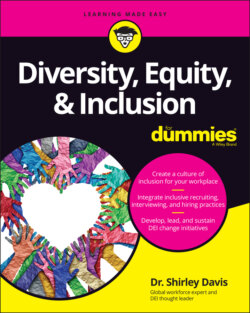Читать книгу Diversity, Equity & Inclusion For Dummies - Dr. Shirley Davis - Страница 31
Prejudice and stereotypes
ОглавлениеA stereotype is a widely held but fixed and oversimplified image or idea of a particular type of person, thing, or group. Prejudice is an attitude or feeling of unfair dislike based mostly on opinions and stereotypes rather than facts and evidence because of some characteristic such as race, age, religion, and so on.
Stereotypes are any commonly known public belief about a certain social group or a type of individual. They can be positive (for example, most people assume that all millennials are tech-savvy). Prejudices, on the other hand, are almost always negative and aren’t based on reason or experience. They often are supported by a belief that certain people or groups have less worth or fewer abilities. Prejudiced behavior is often influenced by bias.
Stereotypes are often believed and perpetuated out of humans’ need to believe a generalized assumption about a group they don’t normally interact with. Stereotyping and prejudiced behavior (that is, discrimination) often go hand in hand because prejudices are often based on believing stereotypes. Discrimination, then, is negative, destructive, and exclusionary behavior toward an individual or groups of people based on identity groups (such as race, gender, sex, ethnicity, or social class). Prejudice and stereotypes are perpetuated through discrimination at the individual, institutional, and structural level, and discrimination is put into practice through personal behaviors, practices, cultures, laws, and policies.
Think for a moment about your own experiences with stereotypes. What stereotypes were you taught growing up? What messages did you receive about your group? What messages did you receive about people who are different from you?
